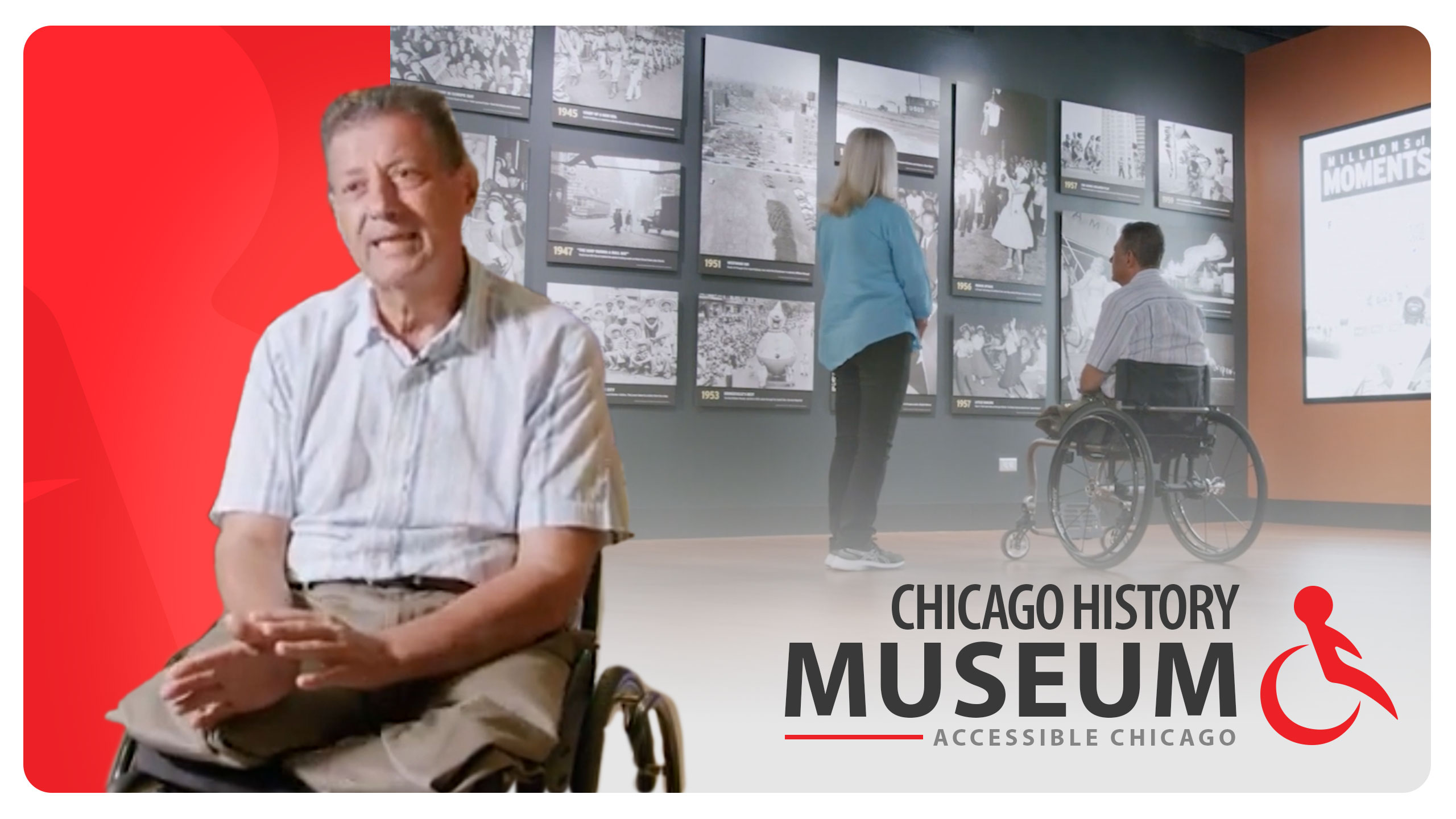
Join us on a journey through time at the Chicago History Museum, located in the heart of Lincoln Park at 1601 North Clark Street. Founded in 1856, the museum has been a beacon of Chicago’s rich cultural heritage for over a century. Gus, a longtime resident of Chicago shares his experience navigating the city with a wheelchair and prosthetics. Discover how the museum’s accessibility features, including lower counters, wheelchair-accessible bus tours, and spacious exhibits, create a welcoming environment for all visitors.
Click to View ASL Transcript
JOSHUA ANDERSON: We’re here at the Chicago History Museum. We’re in the south end of Lincoln Park, just off Lakeshore Drive at 1601 North Clark Street. We’re accessible by public transportation. We have a parking lot across the street at 1730 North Stockton Drive. The organization was actually founded in 1856 and is the city’s oldest cultural institution. We’ve been in this location since 1931. Chicago History Museum’s mission is to serve as the primary destination for learning, inspiration, and civic engagement, connecting people to Chicago’s history and each other.
GUS: I love the city of Chicago. I’ve been here for almost 40 years. About 27 years ago I was injured, and being using a wheelchair all those years as well as prosthetics, but mostly manual wheelchairs and such, and getting around the city and getting to know what the city and this world provides for individuals with disabilities. When you go to a new location, you always have the sense of a little stress. You haven’t been there before. Which door to get in? Are the push buttons doors actually working or not? So everything that I would need in order to be able to come into the museum, I was able to use. As I was getting close to the counter, there’s a lower counter, and that tells me that it’s for someone in a wheelchair and it’s accessible. That sends me a message that the place is made and targets, and also is pleasing for someone with disability. When I entered, to be able to see an individual who smiled at me and it just felt welcoming.
TOUR GUIDE: Thanks for coming to the museum. We’re so excited that you’re here.
GUS: One of the things I find very interesting, the vastness and the space of it. There’s enough space that you don’t feel crowded. I think when you’re using a wheelchair or an assistive device, people with disabilities were conscious about not wanting to hit someone or hurt someone or someone coming close to me, and there’s enough room that people can be comfortable around that.
JOSHUA ANDERSON: In order to serve the museum’s mission, we have to be equally accommodating to all people who want to visit. We have wheelchair accessible bus tours. You can get through any part of the museum via wheelchair. We offer visual descriptive and touch guided gallery tours. The primary thing is that the exhibits were all designed from the standpoint of accessibility, so it shouldn’t necessarily be especially noticeable, but everything should be easy to get to.
GUS: The space is tremendous. You can see a state-of-the-art stuff. The elevators are operating the ramps. To go to a train and to feel that there’s a ramp that can get you as close to the train as possible is really unique. Yeah. The details on this, just amazing. This is where people can hold and-
TOUR GUIDE: And there’s, yes. There’s a bar that they could hold.
JOSHUA ANDERSON: The Chicago History Museum is a destination for Chicagoans because it connects people to their own city’s history. I like to think of this place as belonging to everyone who cares about the city. One of the things that’s unique to this museum, the thing that we have, is people’s experiences. And you don’t have to be an expert coming in or really even know anything, because just by being here, you’ve already understand part of why this place exists.
GUS: I think one of the things that this museum does for the visitors and guests with disabilities that come here, you get a sense that it’s a very inclusive environment. That pretty much everything that everyone gets to see or observe, I get that chance as well. So for me, it’s that element of being inclusive, that I have the full experience. And I think that’s the word I want to use it. You get the full experience coming here. You don’t feel like, well, that room, I can’t get you in or that room I can. It felt really comfortable and it felt really good enough where I want to come back more and more because I was very excited that the fact that when something is inviting and you have a good experience, all you want to do is come back.

Recent Comments